22 Oldest Grocery Stores In The United States
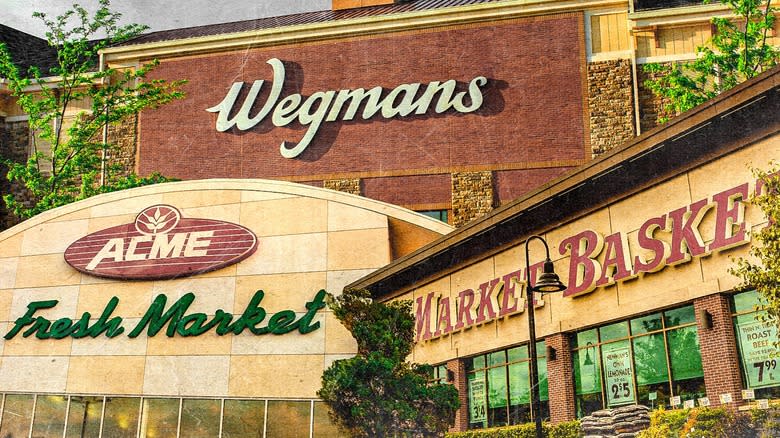
Grocery stores play a pivotal role in shaping and sustaining our modern society, serving as vital hubs where individuals, families, and communities converge to meet their nutritional needs. Beyond being mere purveyors of food, these establishments function as dynamic social and economic entities that bring all our basic needs together in one place. This accessibility fosters community health by ensuring that individuals have ready access to a variety of nutritious options, contributing to overall well-being and the prevention of food insecurity.
This allows us to pick up meat, fish, and vegetables at the same time — something that used to require stops at the butcher, fishmonger, and fruit stand. Indeed, grocery stores are relatively new inventions in human society, yet it's hard to imagine a time before they existed. What we can do instead is look back to their origins and try to glean the circumstances of their formation. So, we've compiled a list of America's oldest grocery stores based on open-sourced research. These include supermarket chains as well as individual, locally run stores.
Read more: 14 Popular Chain Grocery Stores For Meat, Ranked Worst To Best
Market Basket
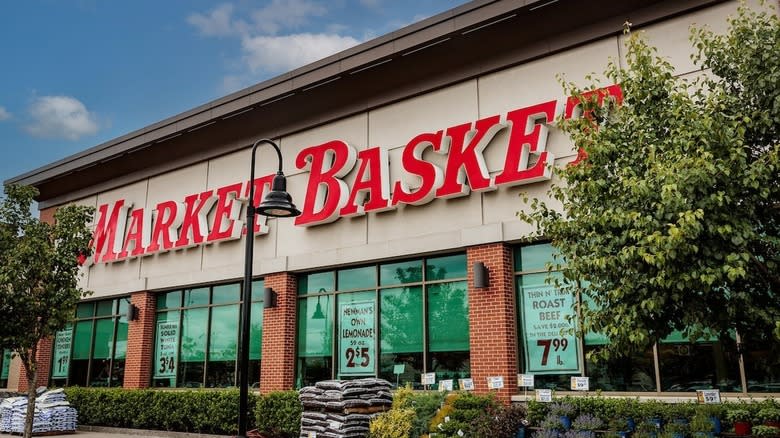
Market Basket is a regional supermarket chain operating in the Northeast. It was founded in 1917 in Lowell, Massachusetts. Initially known as DeMoulas Market, it later morphed its name into Market Basket and now boasts almost 90 locations within New England. The store is known for offering some of the most competitive prices in the grocery store field — or about 18% lower than other grocery store tabs in the greater Boston area, according to WBUR.
Unsurprisingly, for a store this old, there is a lot of history going on here. After the founder's grandchildren took over, a series of dramatic events ensued, including court cases among family members, picket lines from employees and customers demanding the reinstatement of a cousin who had been pushed out, and a series of documentaries on these dramatic events. As a result, the store – which has maintained its family-run status — remains an important institution within the local community.
ACME
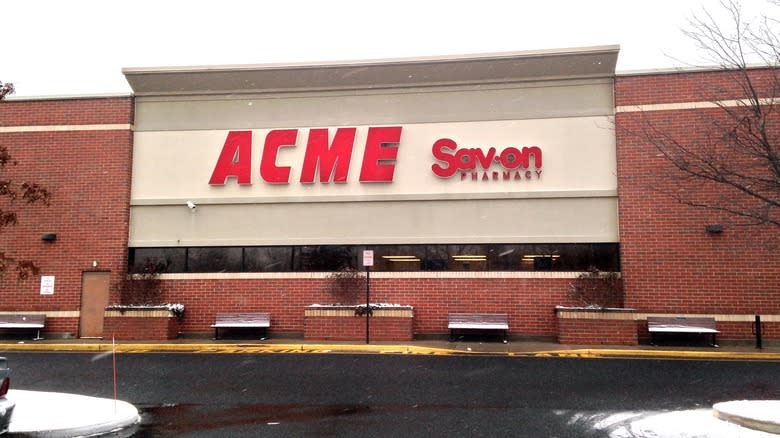
ACME began as a labor of love between two friends, who opened it back in 1891. It started life as a small grocery store in a south Philadelphia neighborhood and has since expanded to include locations in the tri-state area and beyond.
In the late 20th century, ACME became part of the Albertsons Companies, a major grocery conglomerate. This transition marked a new era for ACME, enabling it to leverage the resources of a larger corporation while retaining its regional identity. The store has faced a number of challenges over the years, including a lag in innovation compared to some fierce competition, but it remains strong among shoppers in and around Philadelphia.
Piggly Wiggly
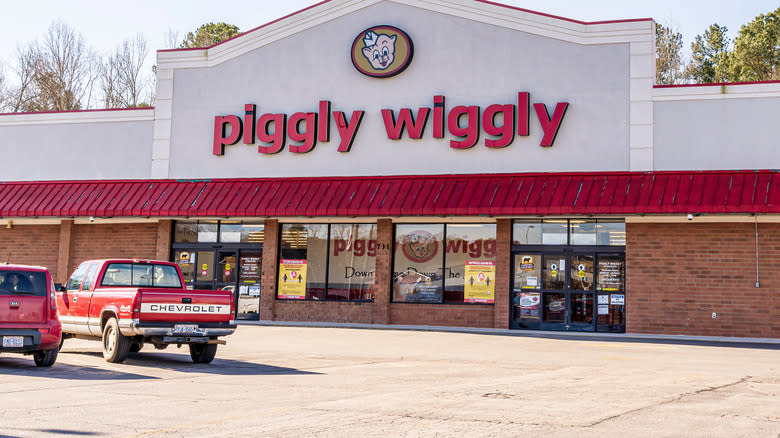
If the name Piggly Wiggly sounds strange for a grocery store, just wait until you hear how weird the story of its founding is. The first store opened in 1916 in Memphis, Tennessee, when the concept of serving yourself at a market was still very novel. Most people were used to walking into a shop and asking a clerk to get everything for them.
With Piggly Wiggly, all this changed. After the grand opening that involved a beauty contest for women only — a marketing idea that certainly did not age well — people began to take to the self-service grocery store idea in droves, and still do today. As for the name itself, the jury is still out on why it was ever called that.
Wegmans
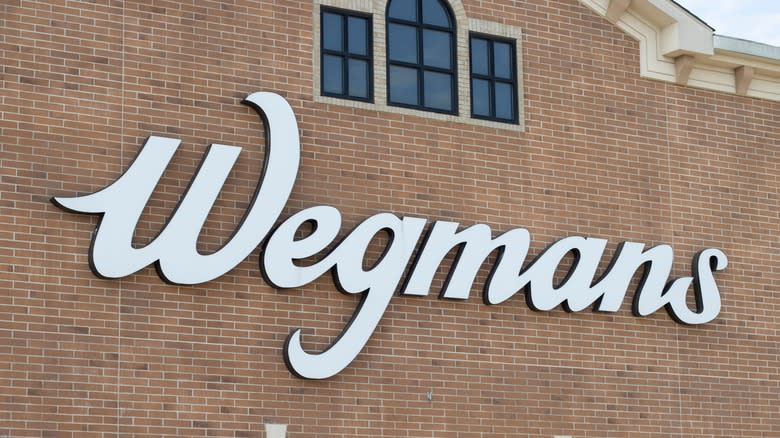
Wegmans was founded in 1916 by brothers Walter and John Wegman in Rochester, New York. What began as a small fruit and vegetable stand evolved into a full-fledged grocery store with an emphasis on quality products and exceptional customer service. In the early years, Wegmans distinguished itself by introducing innovations such as self-service and refrigerated display cases, setting a standard for the modern supermarket experience.
Under the Wegman family's leadership, the company expanded its footprint in the mid-20th century, focusing on providing an extensive selection of fresh, high-quality products. On Fortune's list of best places to work, Wegmans is committed to employee welfare, customer satisfaction, and community involvement. Today, Wegmans is a beloved and highly-regarded grocery chain with a strong emphasis on customer experience, employee well-being, and a reputation for offering a diverse range of premium products.
Doud's Market
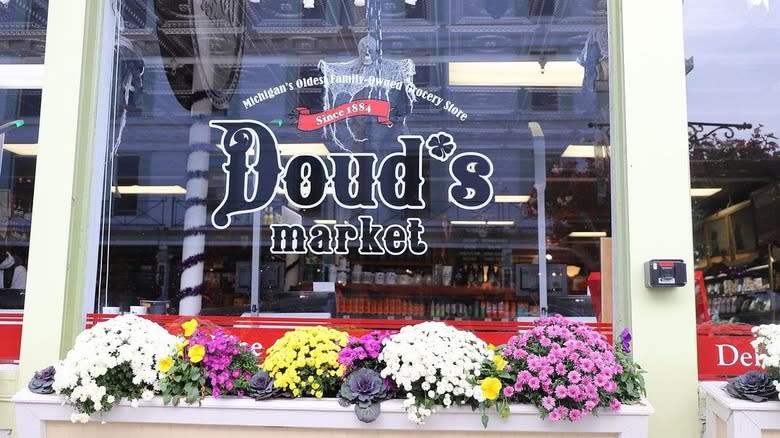
Most grocery stores you see today are part of a larger chain, especially the ones that have been around for decades. This is why Doud's Market on Mackinac Island stands out so much. It's a family-run grocery store that was founded in 1884 and is still run by the fourth generation of the same family, namely Andrew Doud.
Not only is Doud's Market old and charming, but it also provides the essentials one might need on a typical grocery run. Fresh produce is available all year round, and you can easily find all the trappings for a delicious Italian meal or a complete Sunday dinner.
Gristedes
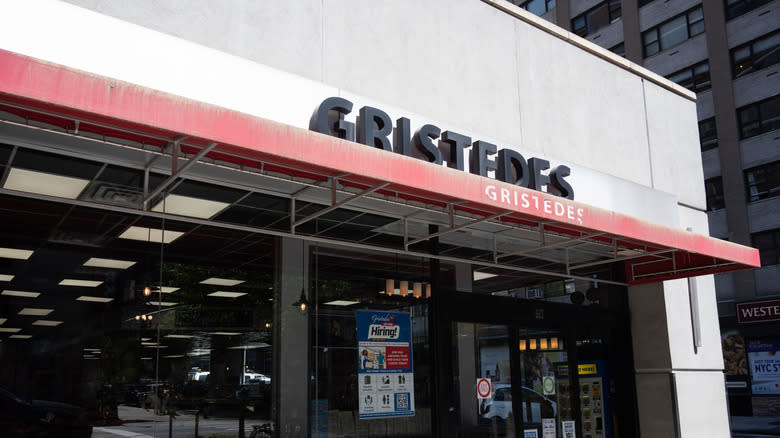
Founded in 1891, Gristedes is one of New York City's oldest and most prominent food purveyors. Its first location was on 42nd Street and Second Avenue, ideally situated to serve New York's upper crust. Despite this lofty status, Gristedes has struggled to remain relevant as a supermarket in a place where competition in the field is especially fierce, particularly due to skyrocketing rents.
Nevertheless, Gristedes remains operational and is a fine place to buy your groceries. It currently boasts multiple locations across Manhattan, including in some of the most affluent areas on the Upper East Side and Chelsea.
Raley's
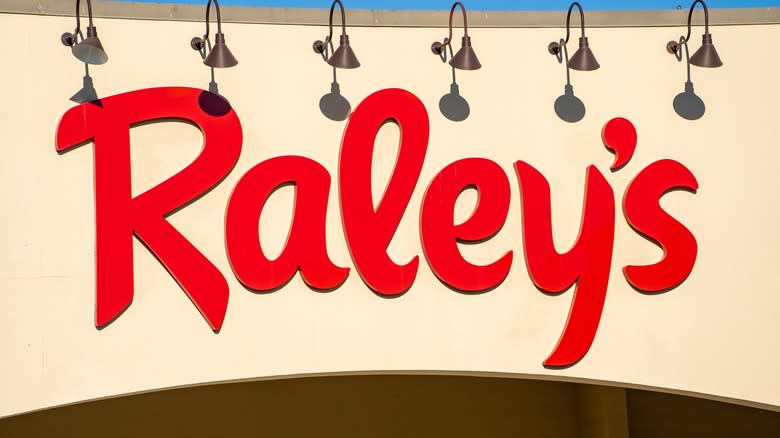
What started as a simple meat market back in 1935, Raley's has now become a beloved supermarket institution in parts of Nevada and California, particularly in Placerville, where it all began. That's in part due to its ability to provide good quality groceries in a convenient setting but also because of its community giving, which includes programs such as child welfare and food security.
Today, the grocery store is still run by the third generation of the Raley family, in part because the first owner, Tom Raley, owned himself all the way until his death in 1992. His daughter Joyce took over after that, after which it was the turn of her son Michael.
Big Y
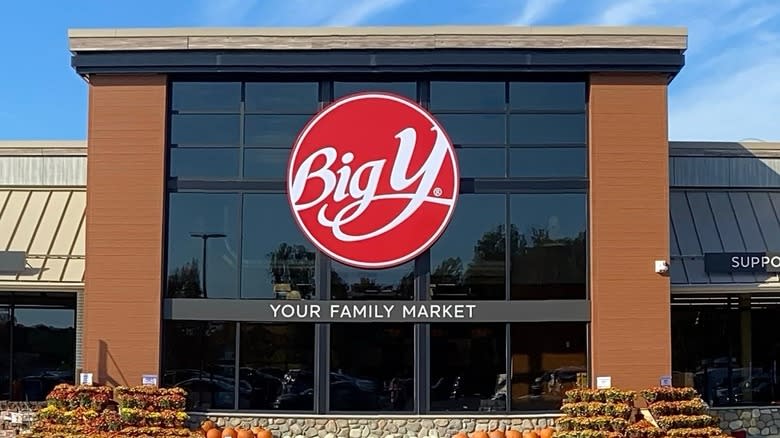
Springfield, Massachusetts, is the home of many inventions. Basketball was invented there in 1891, and the author who would become known as Dr. Seuss was born there in 1904. Another great invention Springfield can boast is the Big Y, a full-service supermarket with locations throughout Massachusetts and Connecticut.
The store was founded in 1936 at an intersection that formed a "Y" shape, which gave the name to the now-popular chain. Since then, the supermarket has continued to adapt to the times, making credit payments available sooner than most and, at one point, buying up a new store every two years or so. Nowadays, they even have their own gas stations.
Buehler's Fresh Foods
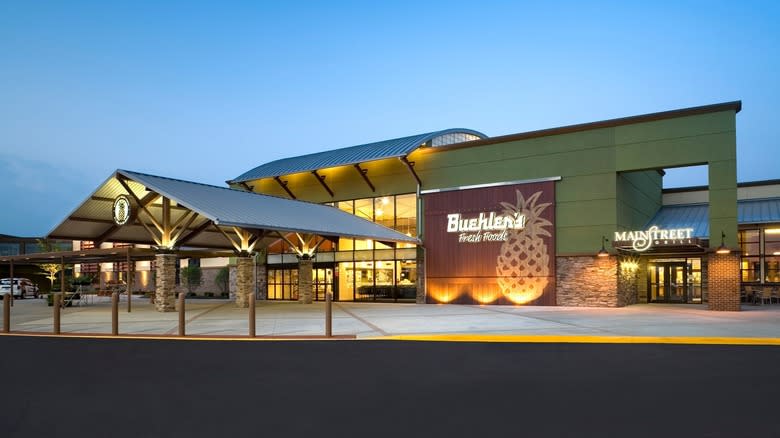
Buehler's Fresh Foods, established in 1929 in New Philadelphia, Ohio, is a popular grocery store chain with 13 locations across northeast Ohio. Buehler's offers a diverse range of fresh produce and bakery goods, including cakes and bagels. The store's butchers make top-notch selections of Certified Angus Beef, Gerber's Chicken, and Prime Pork available to customers on a daily basis, while fresh and frozen seafood is also on offer. Meanwhile, the deli department prepares in-house entrees, sides, and soups.
If you're having a dinner party, you can't go wrong with Buehler's because, in addition to all the ingredients you'll need to cook, it also boasts an extensive wine and craft beer department with knowledgeable staff to assist customers. Many locations also feature floral shops with dedicated designers. It's always nice to have fresh flowers on display when guests are over!
Kroger
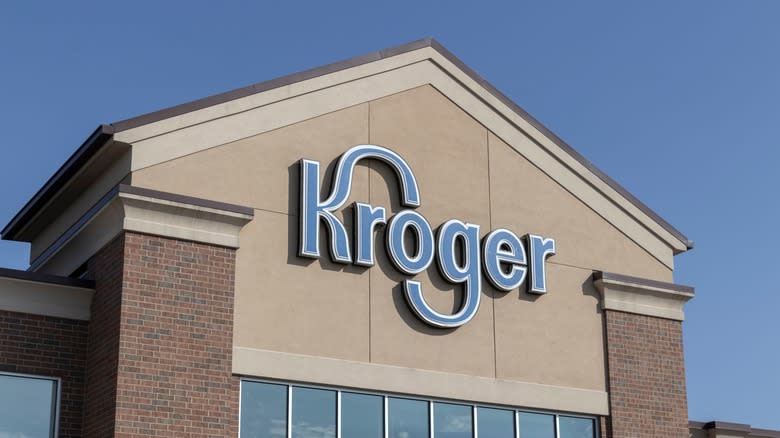
Kroger, the American grocery powerhouse, traces its origins back to 1883 when founders Bernard Kroger and B.A. Branagan established the Great Western Tea Company in Cincinnati with a mere $372. Despite early setbacks, including a tragic train collision and the 1884 Great Flood, Kroger persevered, and by the early 1900s, it evolved into Kroger Grocery and Baking Co.
Kroger was a pioneer in the one-stop shopping phenomenon, where it offered various goods for sale under a single roof, something that was quite rare before 1901. Today, Kroger boasts 2,800 stores nationwide, a variety of private brands, and a net worth of about $33 billion, securing its status as a leading American grocer. Kroger's legacy endures, influencing contemporary trends like online grocery shopping, which continues to expand in the ever-evolving landscape of retail technology.
Hannaford
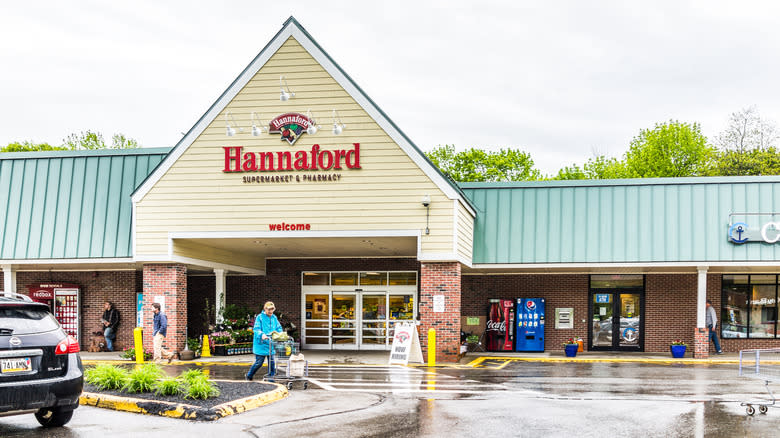
Hannaford has a unique retail history. Originating as a produce wholesaler in Portland, Maine, in 1883, it took a whopping 44 years to expand to include other wholesale categories. The company ventured into retail only 17 years after that, with its first grocery department established in 1927. Hannaford weathered the Great Depression, expanding during the 1930s, and adopted the "51-49" plan in 1944, financing supermarkets where it held 51% ownership while 49% was owned by the operator of that particular store.
Gradually transitioning to retail, it merged with T.R. Savage Co. in 1955 in order to grow beyond Maine. In 1971, Hannaford went public and entered the drug store business. Innovations in technology, strategic information systems, and a home shopping service marked the 1990s, and they have been going strong ever since.
Brookshire Brothers
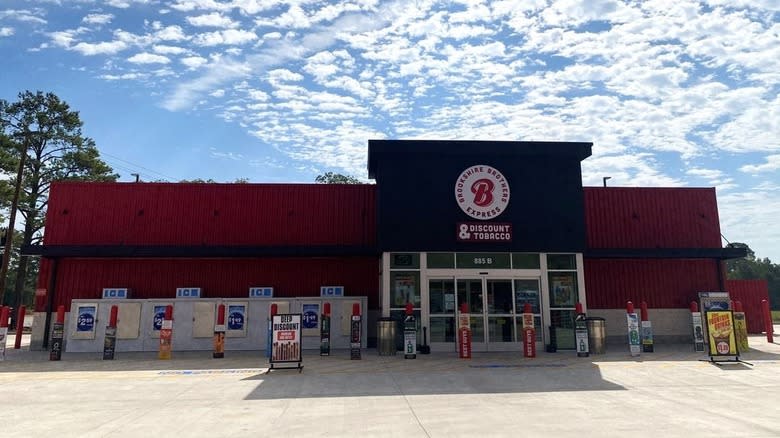
In 1921, siblings Austin and Tom Brookshire launched the very first Brookshire Brothers grocery store in Lufkin, Texas. With a vision for regional expansion, they grew their operations to encompass 33 grocery stores in East Texas. Today, the company also boasts some 180 stores in Texas, Louisiana, and Arkansas.
Brookshire Brothers is not to be confused with another local chain known as Brookshire Grocery Co., though you would be forgiven for thinking they were one and the same. The latter was taken over by a Brookshire cousin, who split from the Brookshire brothers back in 1939. It remains a separate entity today.
Hy-Vee
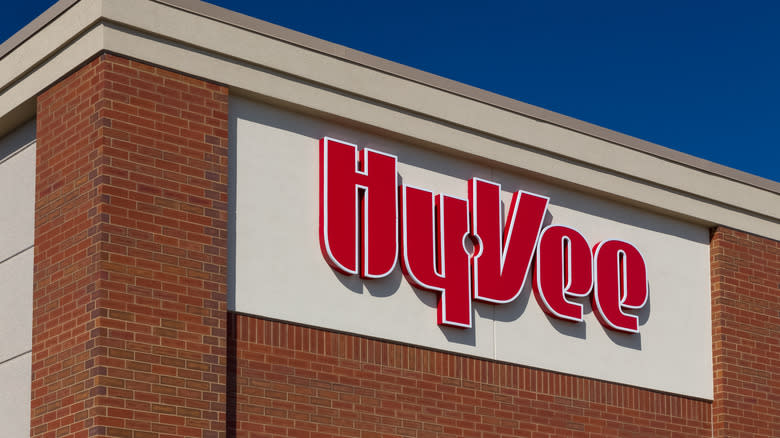
Hy-Vee, a Midwest-based grocery store chain, has evolved from its humble beginnings in 1930 as a small general store in Beaconsfield, Iowa, weathering the Great Depression and growing into a company with over 265 locations across eight states and annual sales of $10 billion. The original Hy-Vee store is listed on the National Register of Historic Places, highlighting its historical significance.
What sets Hy-Vee apart even today is its employee-owned model, established in 1938, where high-level employees own direct stock, and more than 45,000 participate in the employee stock ownership plan. Moreover, the company has diversified its store formats, introducing concepts like Fast & Fresh and HealthMarket.
Publix
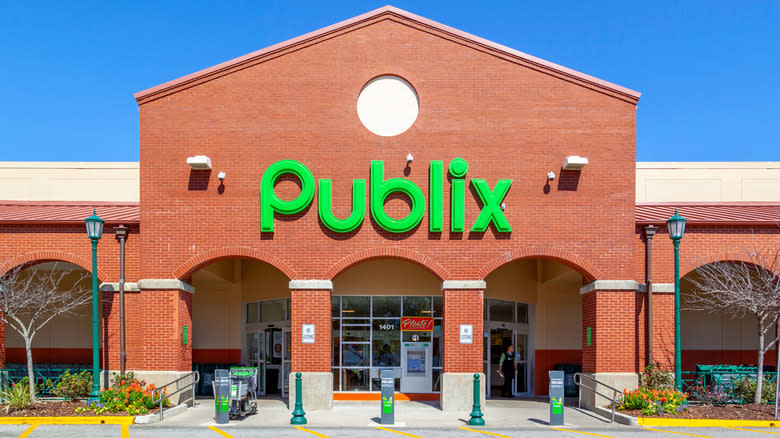
The year 1930 was a big one for the state of Florida. That was when George Jenkins transformed the lives of local families by inaugurating the first Publix store, which opened in Winter Haven. But Jenkins had bigger dreams than that, and after mortgaging his orange grove, he erected the first Publix "supermarket" in the same city a decade later, becoming a smash hit.
World War II caused a supply shortage, hindering Jenkins from expanding his store network. Even so, in 1945, he acquired the "All American" grocery store chain, converting all outlets into Publix supermarkets. Later, Jenkins relocated the headquarters to Lakeland, and Publix emerged as a formidable billion-dollar corporate entity, boasting yearly earnings comparable to Nike. Looks like Publix Just Did It.
Safeway
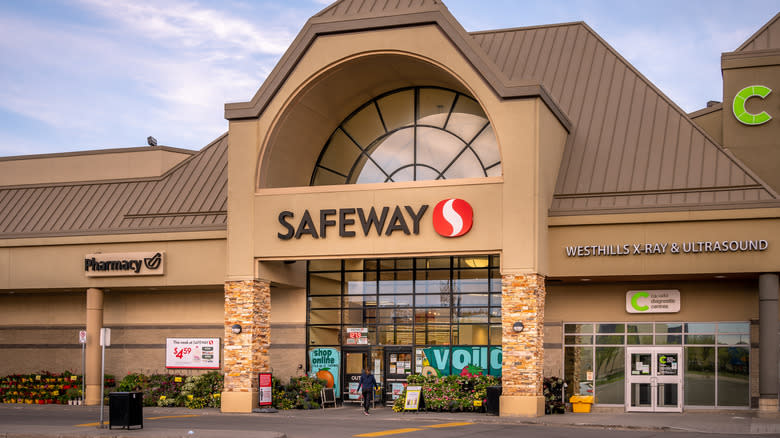
The Safeway Organization traces its roots back to 1915, when one M. B. Skaggs purchased a grocery store from his father in American Falls, Idaho. By 1917, he had opened a second store, and by 1921, Skaggs and his five brothers expanded the chain, covering all of Idaho and parts of Montana under the name Skaggs United Stores.
From then on, the brothers continued to join forces to conquer the supermarket world. The company entered California in 1925 when the eldest Skaggs brother purchased Skaggs Cash Stores, and in 1926, Skaggs United Stores merged with the Sam Seelig chain in Southern California and soon became known as Safeway. Throughout the late 1920s, Safeway continued its growth through various acquisitions. It now boasts locations from coast to coast as well as stores in Alaska and the UK.
Winn-Dixie
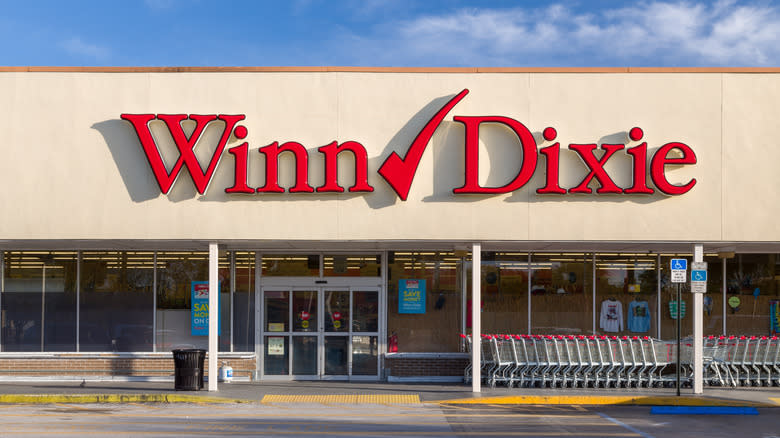
Founded in 1925 in Miami, Winn-Dixie evolved from the Davis family's Table Supply into a grocery empire by merging with Winn & Lovett in the 1930s. However, by the 2000s, it faced tough competition from Publix and Walmart, leading to bankruptcy in 2005. Acquired by Bi-Lo LLC in 2011, it became part of Southeastern Grocers, which later filed for bankruptcy in 2018.
As of 2023, up to 400 Winn-Dixie supermarket locations are due to be sold to Aldi, with the sale expected to be finalized in 2024. Some Winn-Dixie stores will live on with their current name, while others will be converted into Aldis.
Meijer
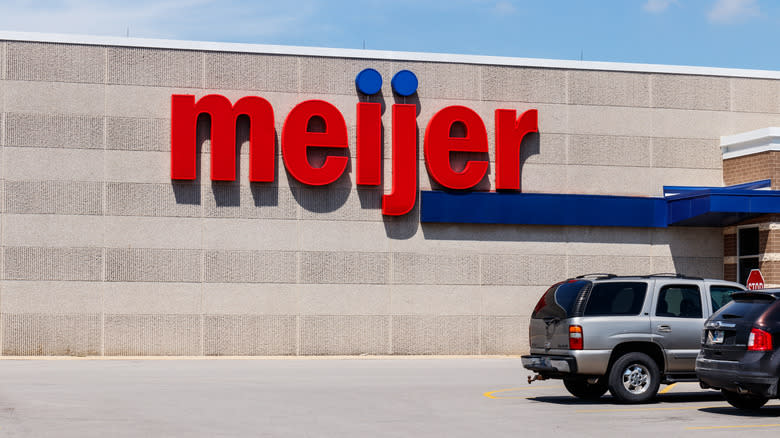
Founded in 1934, Meijer, a Midwest-based grocery store chain, has evolved into a dominant regional player known for its wide product selection at affordable prices. The chain, originating from Hendrik Meijer's first store in Greenville, Michigan, has undergone significant modernization, introducing innovations such as shopping carts in 1938, automatic conveyor belts in 1954, and a 24-hour grocery store concept in the 1980s.
Meijer's pioneering hypermarket model in 1962 inspired Walmart's superstore concept. It has since continued to operate ahead of the curve. Notably, Meijer provides free prescriptions and aims to reduce carbon emissions by 50% by 2025. The brand, currently led by Hendrik's grandsons, Hank and Doug Meijer, has maintained its Dutch heritage while simultaneously using innovative technology, offering services like "shop and scan" before others did.
Price Chopper
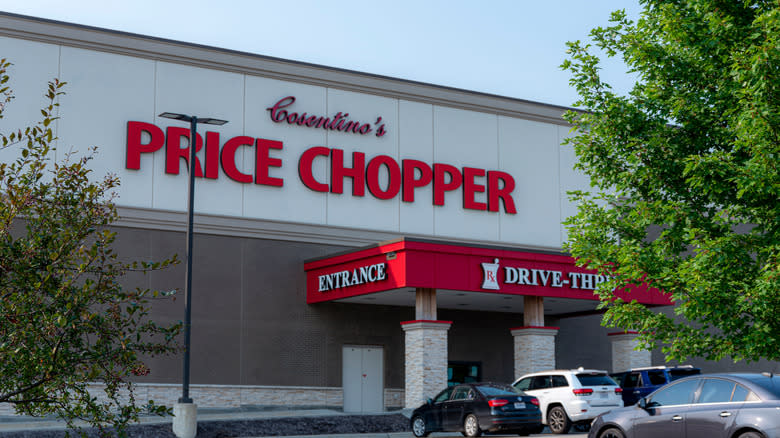
Market 32 and Market Bistro, which now operates Price Chopper, started out as a single, individual store in Green Island, New York, in 1932. The brains behind the brawn were cousins William and Bernard Golub and their business partner Joseph Grosberg, who teamed up to introduce a few then-novel concepts to their store: the self-service supermarket, which was still not the norm, and a focus on bulk buying, warehousing items and passing on the resulting savings to customers.
This, in part, explains why Price Chopper offers such good value groceries even today. Currently, Price Chopper has locations in much of New England, plus New York and Pennsylvania.
H-E-B
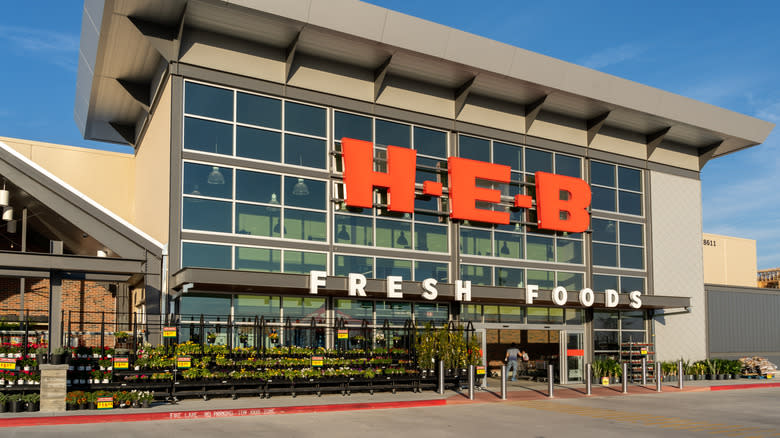
H-E-B began in 1905 when Florence Butt opened the C.C. Butt Grocery Store in Kerrville, Texas. Since then, it evolved, taking on a life of its own, including through the introduction of frozen foods in the 1940s and the creation of Central Market in 1994, offering a gourmet grocery experience.
H-E-B expanded into Mexico in 1997, after which it continued merrily on its road to success. As of 2021, it ranked as the fifth-largest private company in America in 2021 despite being a regional chain. In terms of community outreach, H-E-B has focused efforts on honoring teachers and responding to natural disasters, such as Hurricane Harvey in 2017 and the COVID-19 pandemic.
Albertsons
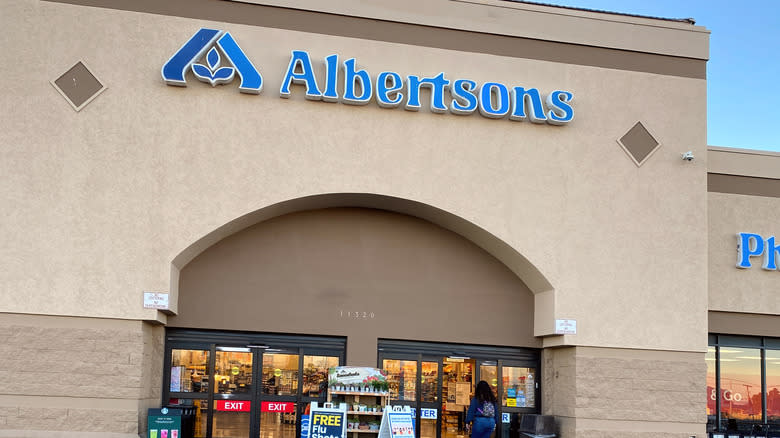
Albertsons, the second-largest U.S. supermarket chain, traces its roots back to 1939, when founder Joe Albertson opened the first store in Boise, Idaho, with novel features like an on-site bakery and magazine racks. The company, now Albertsons Companies, Inc., with over 2,250 stores, maintains its Idahoan roots, even reopening a remodeled store at its original site in 2013.
Not only that, but Albertsons has embarked on a number of sustainability efforts, including using LED lighting, solar energy, and wind turbines to power some of its stores. It also promotes responsibly sourced seafood. Albertsons' robust online shopping services, initiated in the 2000s, and successful response to the pandemic contribute to its recognition as Supermarket News' Retailer of the Year for 2020.
Ralphs
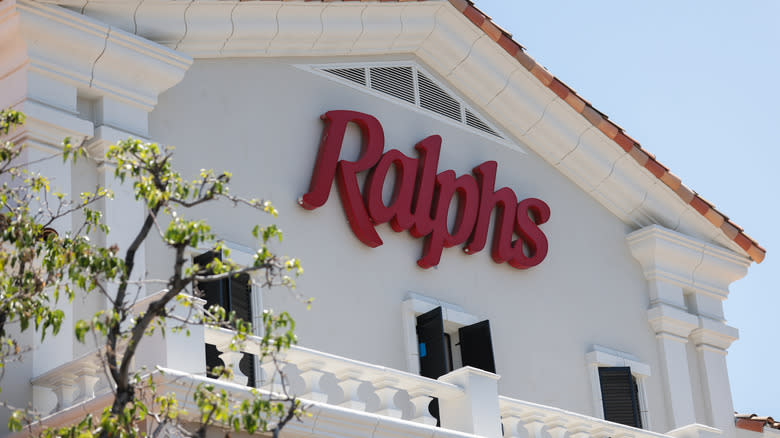
Ralphs, a prominent California grocery chain with 184 locations, traces its roots back to George Ralphs, a master bricklayer who turned to the food industry after losing his left arm in a hunting accident in 1872. Partnering with his farmer brother Walter, they created the Ralphs Brothers brand and established a successful grocery store in downtown Los Angeles in the 1870s.
Recognizing the potential of the growing city, they strategically expanded, maintaining a focus on accessibility for customers. The chain thrived by attracting farmers and facilitating easy access to their products. Despite its success, tragedy struck the founder, George Ralphs, again when he died in 1914 after a boulder dislodged and fell on top of him during a family hike. He was 64 years old.
Rouses
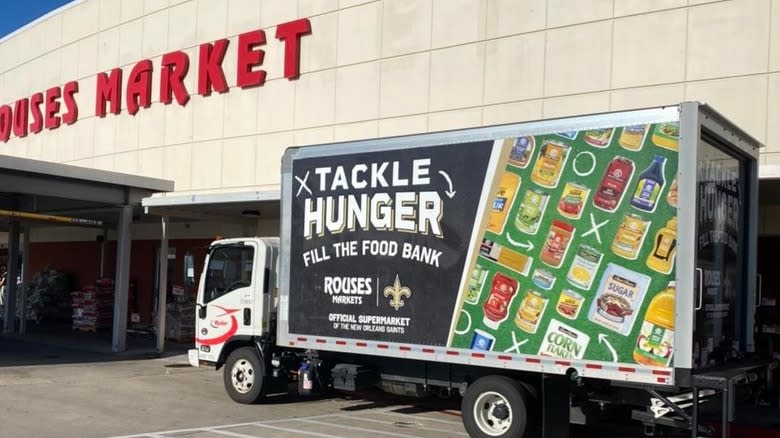
City Produce, the forerunner to Rouses, began when J.P. Rouse set up his first farm stand to sell his produce. The supermarket has come a long way since then. First of all, recognizing the potential for direct shipping, J.P. ventured into the export business, personally engaging with local farmers to guarantee purchases.
Next, as the business evolved and the next generation took over, the grocery store changed its name to Ciro's, after a Rouse cousin and business partner, for the simple reason that it used up fewer letters than Rouse's on the signage. But that didn't stop the following generation who managed the store to change the name to Rouse's anyway. Finally, in another signage-related decision, the apostrophe was removed for increased practicality. In the midst of all this activity regarding its name, Rouses Markets was among the first to provide its shoppers with large quantities of organic produce and exotic fruits from abroad.
Read the original article on Tasting Table.

